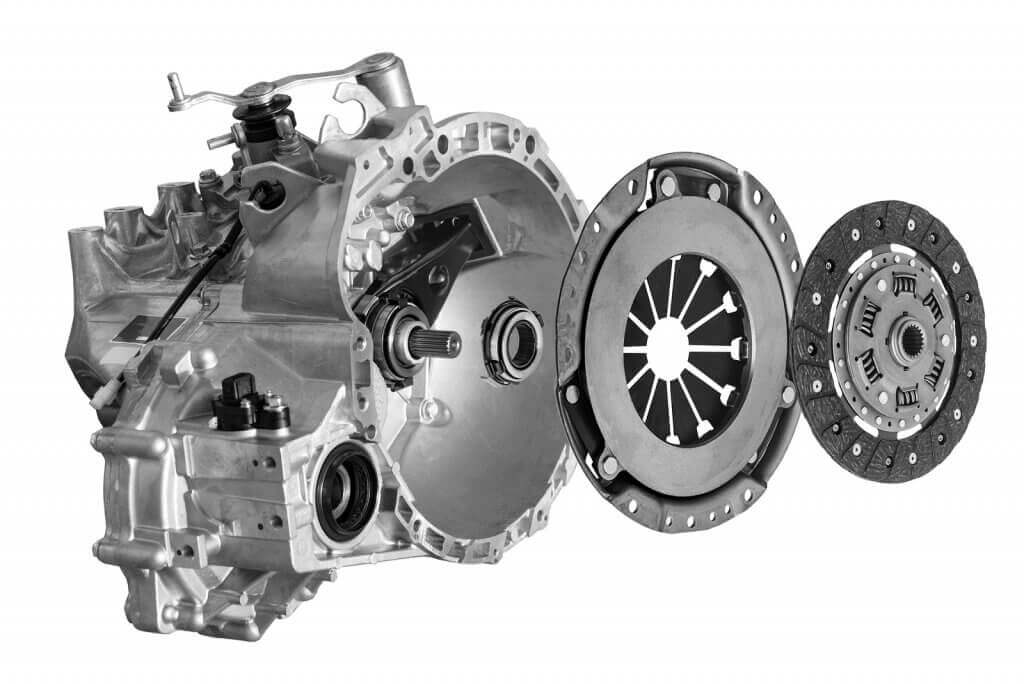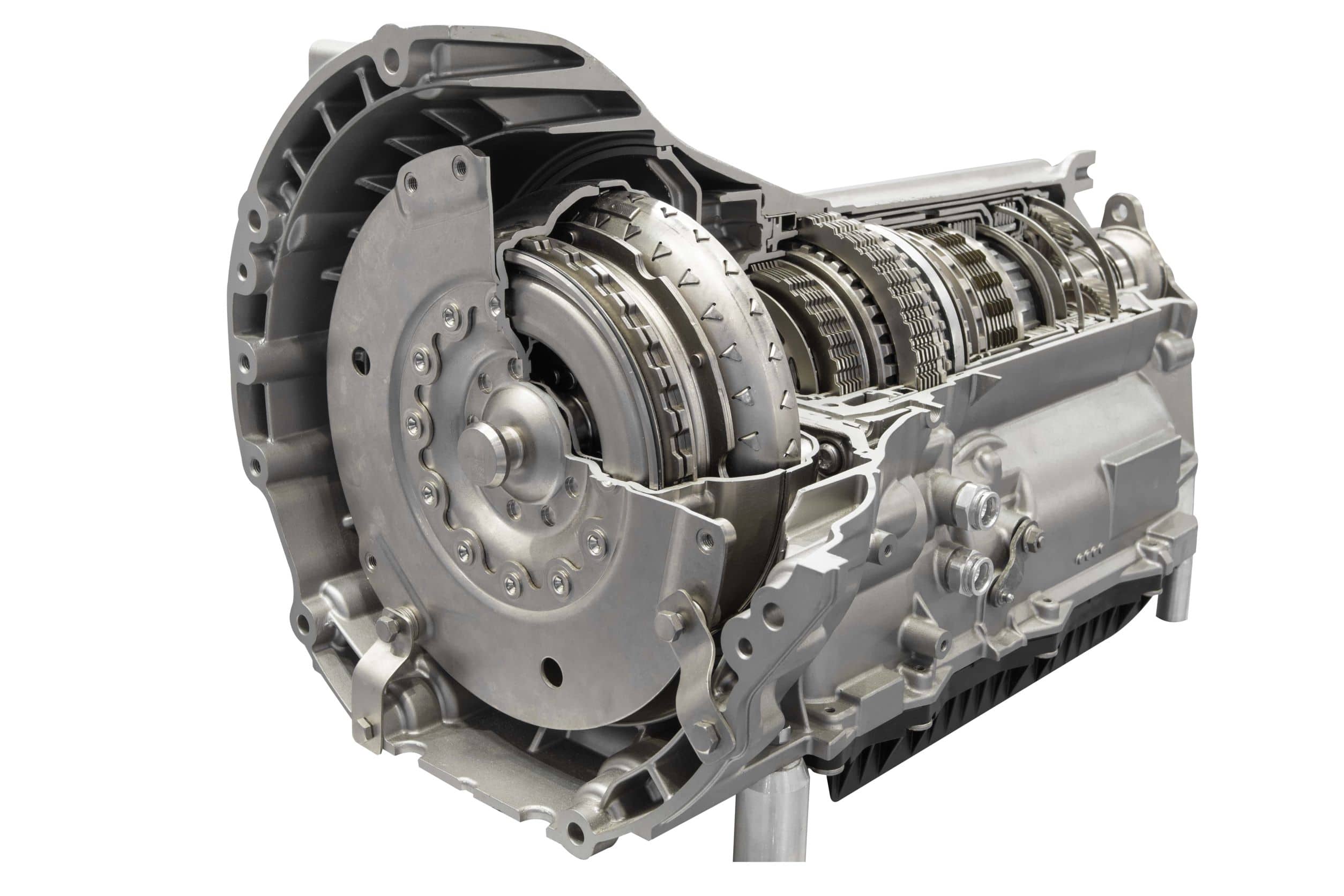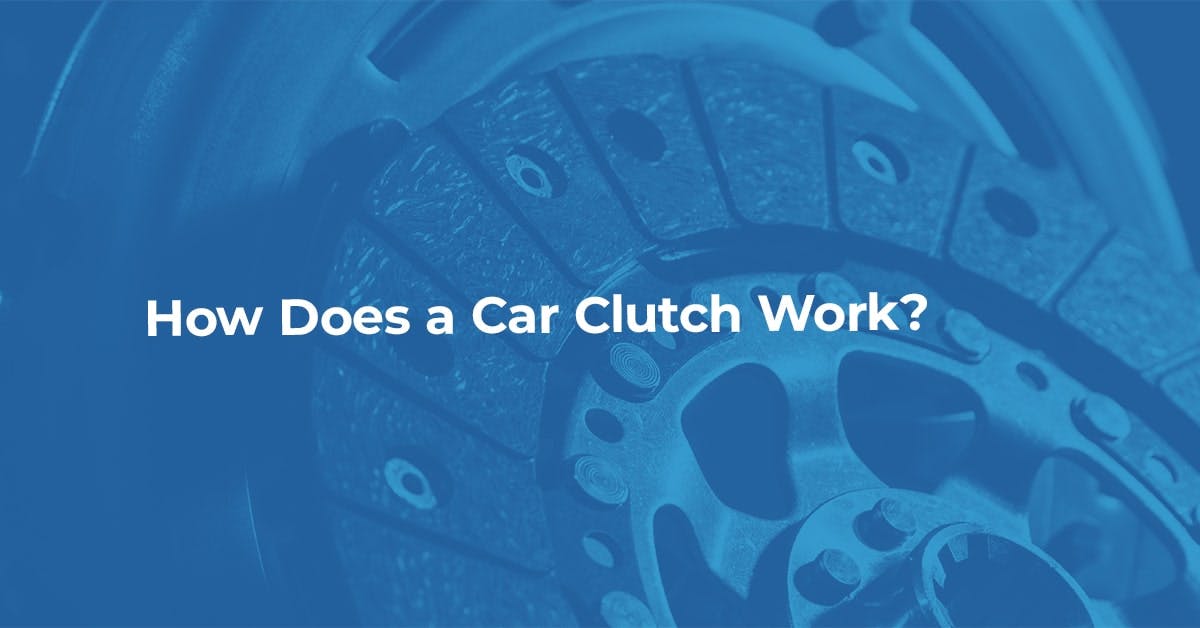The clutch in a manual car works by connecting and disconnecting the engine's power to the transmission.
This allows for smooth gear changes and helps you control the vehicle's speed.
Read on and find out what a clutch does, how you use it, and what the different types of clutch are.
Page Contents
How Does the Clutch in a Car Work?
The clutch connects your car’s two rotating shafts, allowing for three things to happen:
- The shafts lock together to spin at the same speed
- The shafts slip by a controlled amount when the pedal is partially depressed
- Or the shafts decouple so they spin at different speeds
Your engine spins all the time, but your wheels don’t.
To speed up, slow down or stop without killing the engine, the two need to be disconnected.
The clutch engages whilst your car is moving.
The pressure plate exerts constant force onto the driven plate through a diaphragm spring, locking it in place.
When you depress the pedal, you disengage the clutch.
An arm pushes the release bearing against the centre of the diaphragm spring, releasing the clamping pressure from the pressure plate.
This stops the power from the engine from reaching the wheels, allowing you to change gear.
Releasing the pedal re-engages the transmission.
Then, the friction linings on the driven plate smoothly take up the drive again.
How a Car Clutch Works
In other words, the clutch in a car works when you engage the clutch pedal by pushing the pedal on the left with your left foot.
This releases pressure on the clutch disc, allowing it to move freely.
The pressure plate is mounted on the flywheel and exerts pressure on the clutch disc when the pedal is released.
The flywheel rotates and helps the clutch disc and pressure plate to engage - and keeps the momentum of the engine when the clutch is disengaged.
In turn, this creates friction and transfers power from the engine to the gearbox.
In manual cars, the driver can then use the gearstick to change gears.
When the clutch pedal is released, power will be transfered from the engine to the gearbox and wheels, propelling the vehicle forward.
What Does the Clutch Do in a Car?
The clutch connects and disconnects the power from your engine to your wheels, via the gearbox.
Your car’s clutch allows you to speed up or slow down by disconnecting the engine from the wheels without switching it off.
The clutch also works with your transmission to get your car moving in the first place.
Due to the low amount of torque generated at low speeds, you can’t start the engine with any load applied.
Glossary
Flywheel
A heavy disc attached to the end of a rotating shaft. It stores energy to smooth out the delivery of power from the engine to the transmission.
It also stores energy through a process known as ‘rotational momentum’.
This can be used during acceleration to improve your car’s fuel economy.
Transmission
Mounted directly on top of your engine, the transmission converts combustion power into energy that your car can use to move forward.
Without the transmission system, your car wouldn’t go anywhere.
Clutch Plate
The clutch plate is made up of a disc with high friction material around it.
There are friction surfaces on both sides of the disc, with one side acting against the flywheel, and the other against the pressure plate.
Cover Plate
The cover plate is a metal housing that is bolted to the flywheel – connecting it to the clutch assembly.
It ensures that engine torque transfers to the gear shaft through the clutch disc.
Driven Plate
Also known as the friction plate, the driven plate runs on a splined input shaft between the pressure plate and flywheel.
It transmits power to the gearbox and has friction linings – just like brake pads.
If the linings wear down too far, the clutch can slip and won’t re-engage properly.
Pressure Plate
The pressure plate is bolted to the flywheel, and spins when the flywheel does.
It clamps down on the clutch plate when the clutch is engaged.
Diaphragm Spring
The diaphragm spring is one of the main parts of the clutch.
It is a large, round spring steel disc mounted in the clutch cover.
The outer edge touches the back of the pressure plate and releases the clamping pressure when you depress the clutch pedal.
As it does so, it disconnects the transmission from the wheels.
Release Bearing
When you press the clutch pedal, this acts on a release fork which pushes the release bearing into the diaphragm spring.
The release bearing absorbs the rotary motion of the spring fingers against the linear motion of the release fork.
Under Load
The load placed on a car refers to the amount of torque applied to its engine.
A car that is "under load" simply means a car whose engine has taken up the full weight of the vehicle.
Centrifugal
The force felt by an object moving in a curved path away from the centre of rotation.
For example, a vehicle turning a corner would have centrifugal force exerted upon it.
Wet vs Dry Clutch Systems
These are two different clutch systems.
Wet clutches tend to have multiple clutch plates and need lubricating oil to keep the parts cool.
Dry clutches generally only have one clutch plate and don't require oil to remain cool.
How Many Clutch Parts Are There?
There are 5 clutch parts that combine to form the clutch plate:
- Cover plate
- Driven plate
- Pressure plate
- Diaphragm springs
- Release bearing
The clutch in a car works closely with the transmission and the flywheel.

How Do the Transmission and Clutch Work Together?
Your car's engine only produces a small amount of torque when stationary.
You cannot start the engine under load, meaning you need to depress the clutch pedal to start a manual car.
To transfer the engine's power through the transmission into the wheels, your car needs a system to gradually take up the load.
This system is the clutch.
As you release the clutch, the transmission takes up the load and gets you moving smoothly.

Does the Clutch Work Differently Depending on Which Gearbox Your Car Has?
Yes, the clutch can work in different ways in different types of gearboxes.
An automatic transmission has several clutches, which engage and disengage various sites of planetary gears.
As there is no clutch pedal, this is all controlled by the computer.
Other types of clutch system include:
- Cone clutches
- Centrifugal clutches
- Wet vs Dry systems
- Vacuum clutches
- Electromagnetic clutches
Single Plate Clutch vs Multi-Plate Clutch
Most cars use a single-plate clutch system, but many motorcycles, race cars and HGVs use a multi-plate clutch system.
While a single-plate system is the simplest way to change gear, a multi-plate system helps the clutch transmit more torque because it has more friction surfaces.
This makes it more efficient for heavy vehicles and racing cars which need quicker gear changes at higher speeds.
The main differences between a single-plate and multi-plate clutch are:
- The number of clutch plates
- The location of the plates
- Dry vs wet systems
In a multi-plate system, the pressure plates are alternately fitted to the crank shaft and gearbox.
What's more, a single-plate is a dry system, whilst a multi-plate system is wet.
Caring for Your Car's Clutch
To keep your clutch healthy for as long as possible, take care to avoid riding the clutch and keep an eye out for any signs of clutch failure.
At the first sign of a clutch problem, you should book a clutch replacement so that you can stay safe on the road.
FAQs








No comments yet
Leave a comment